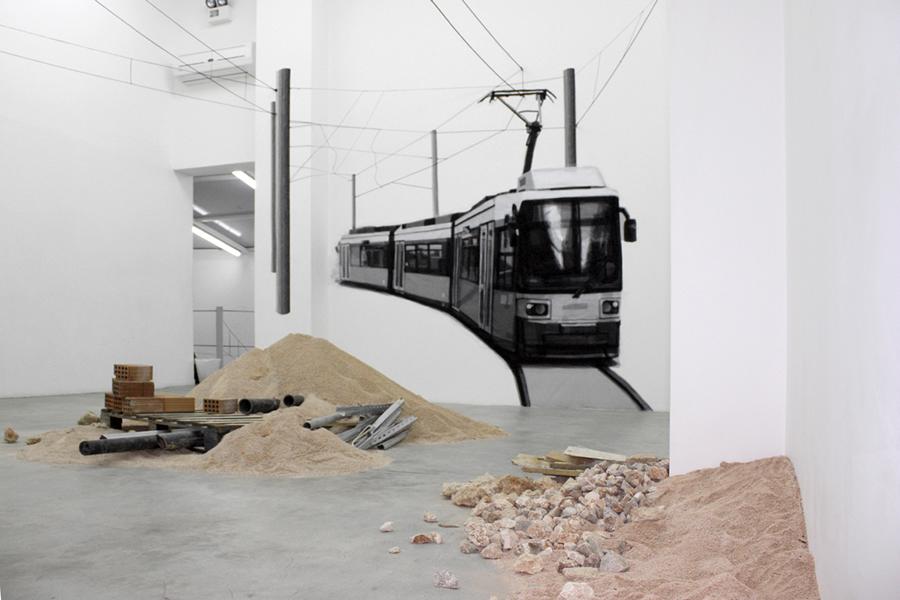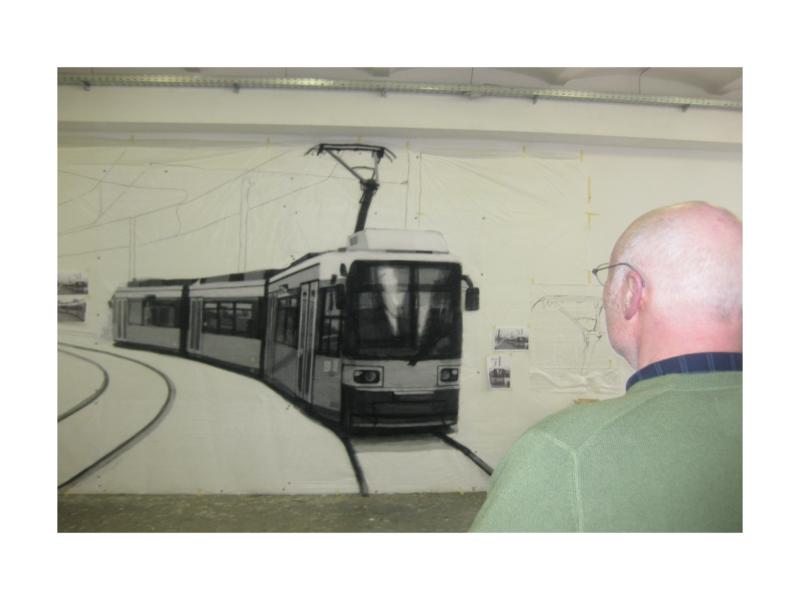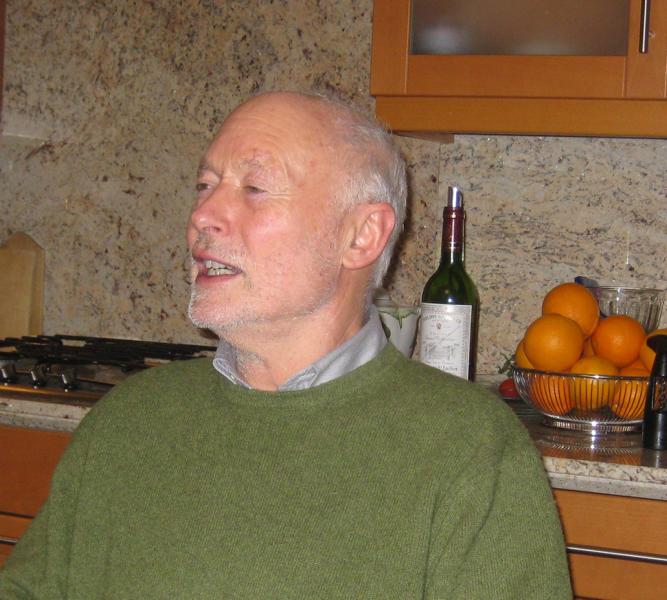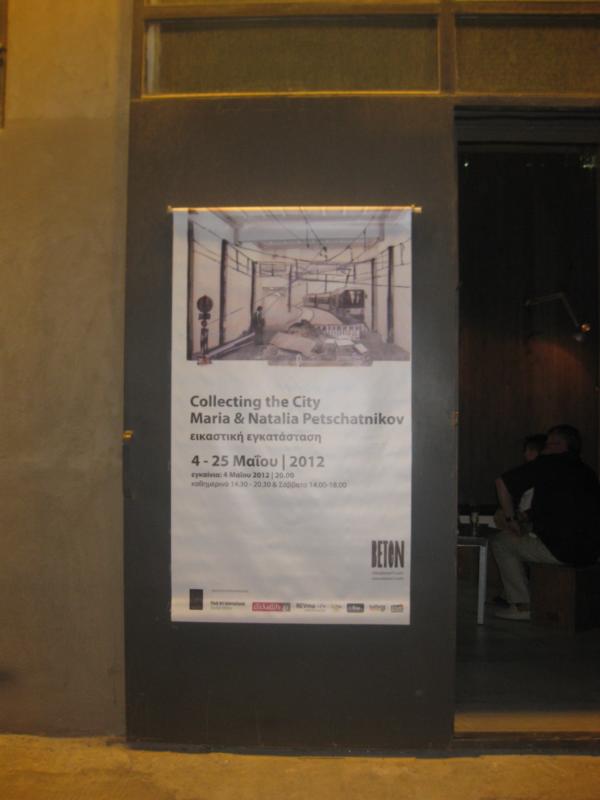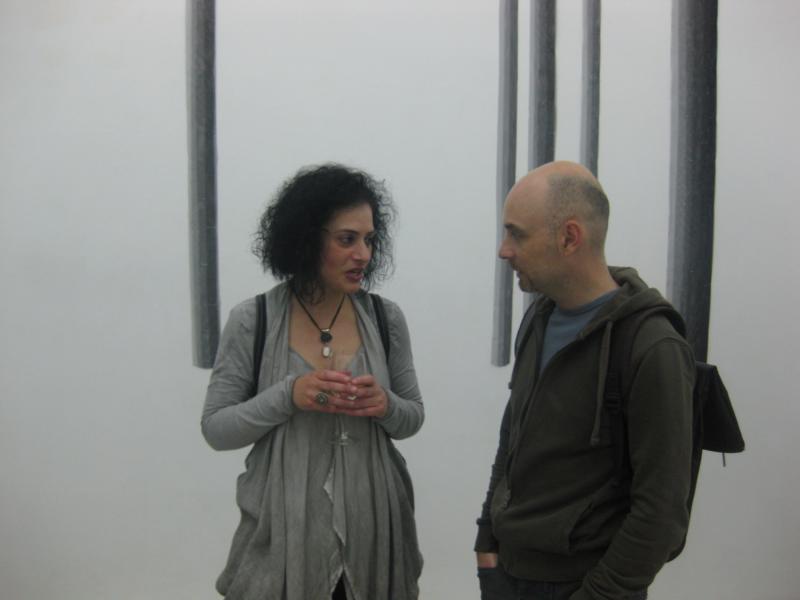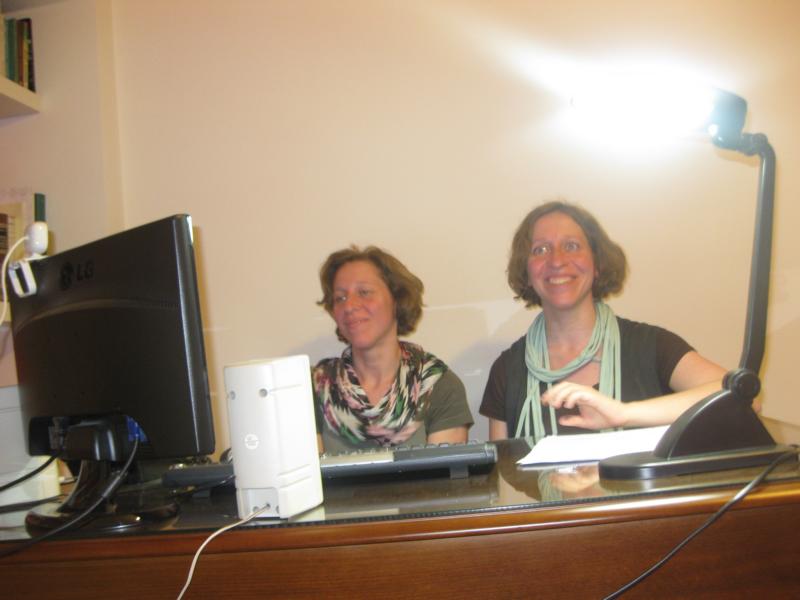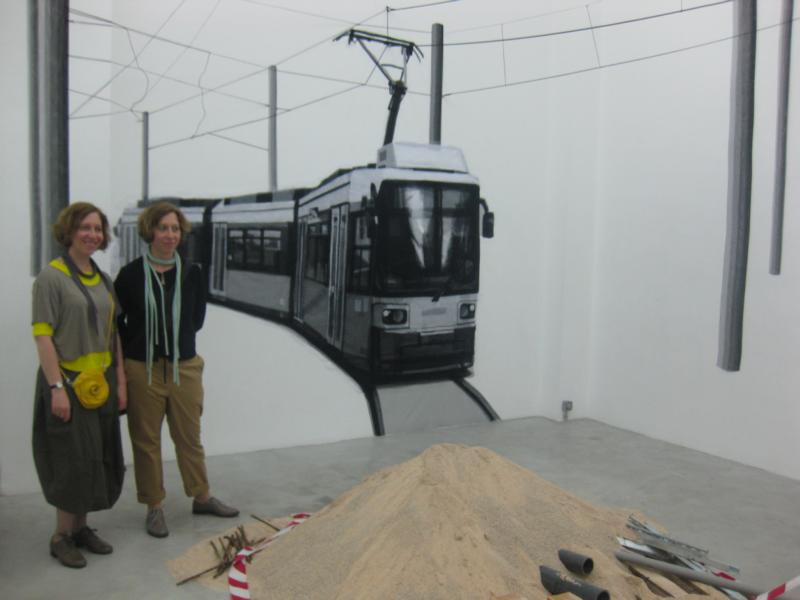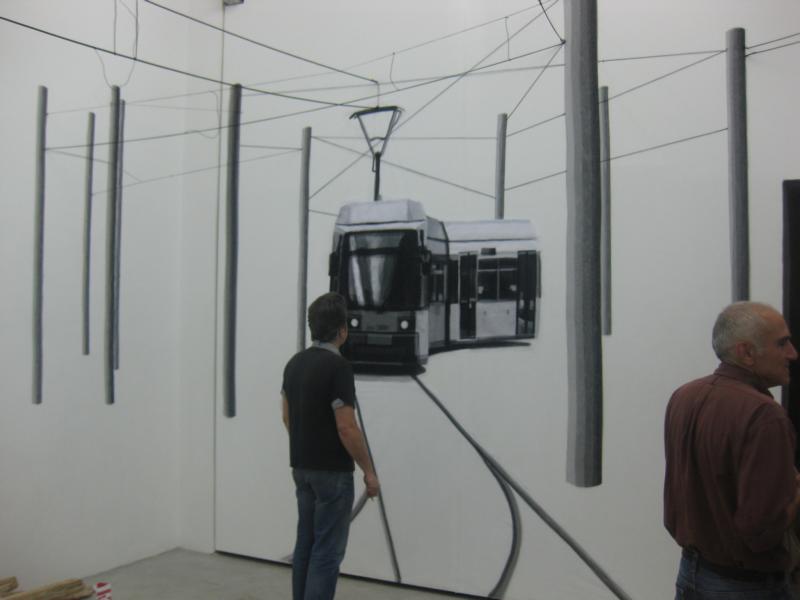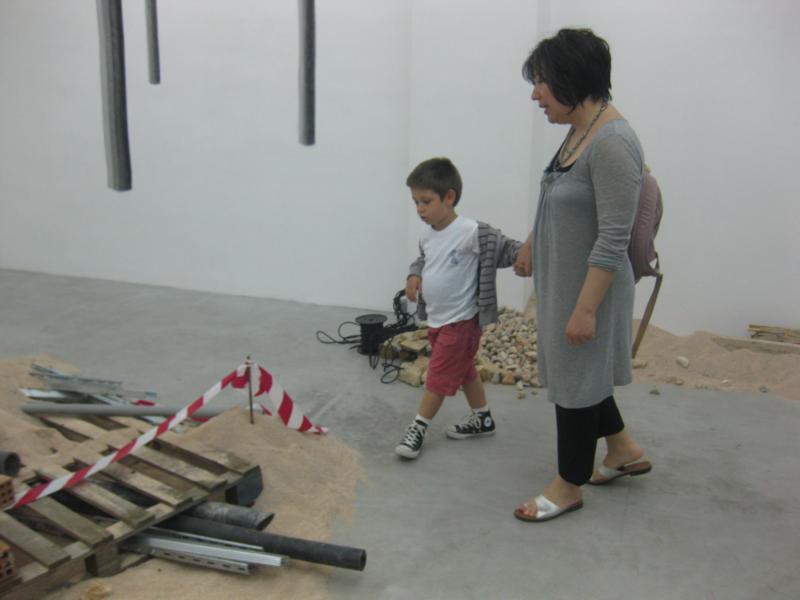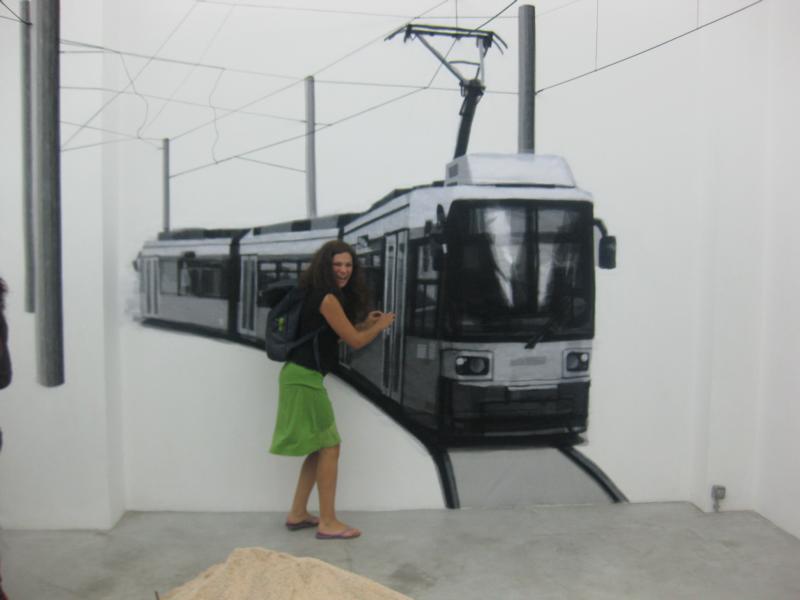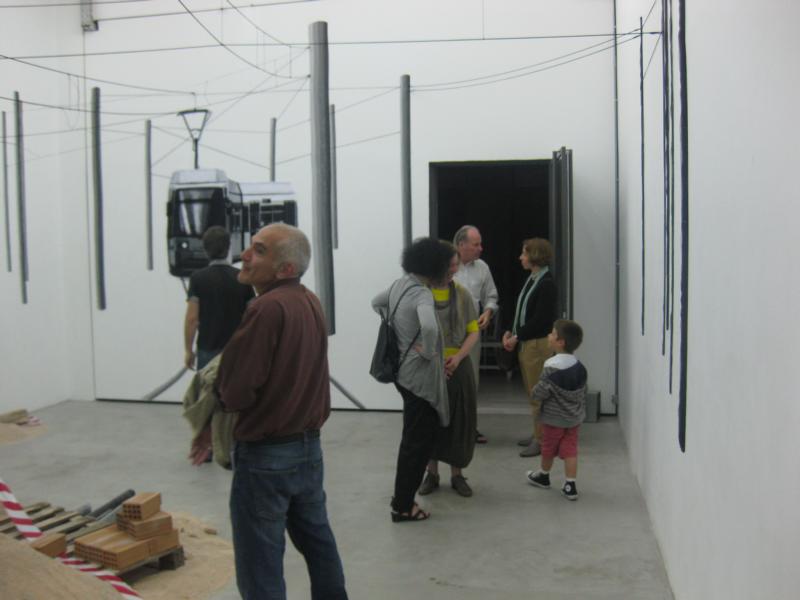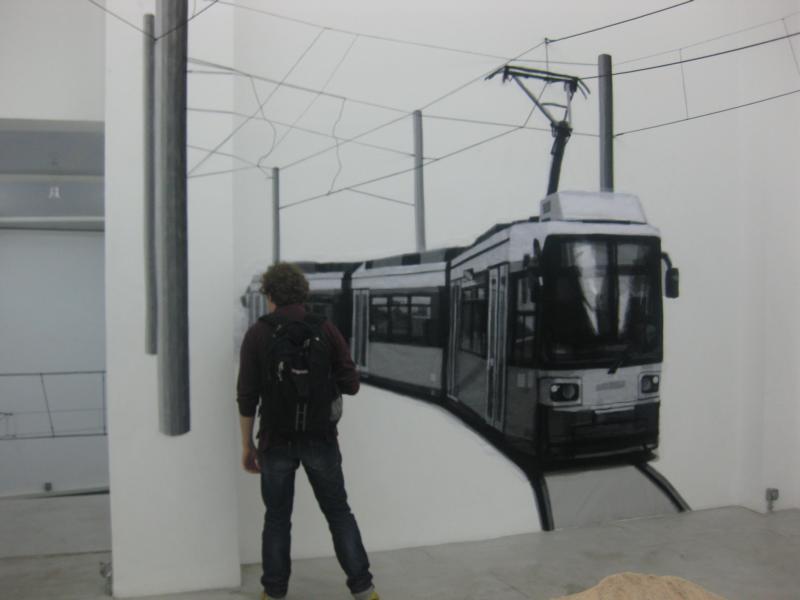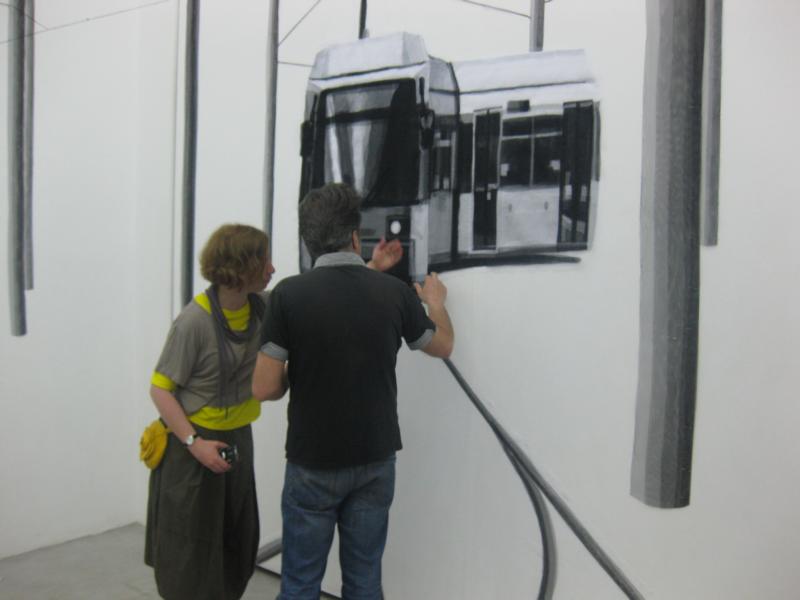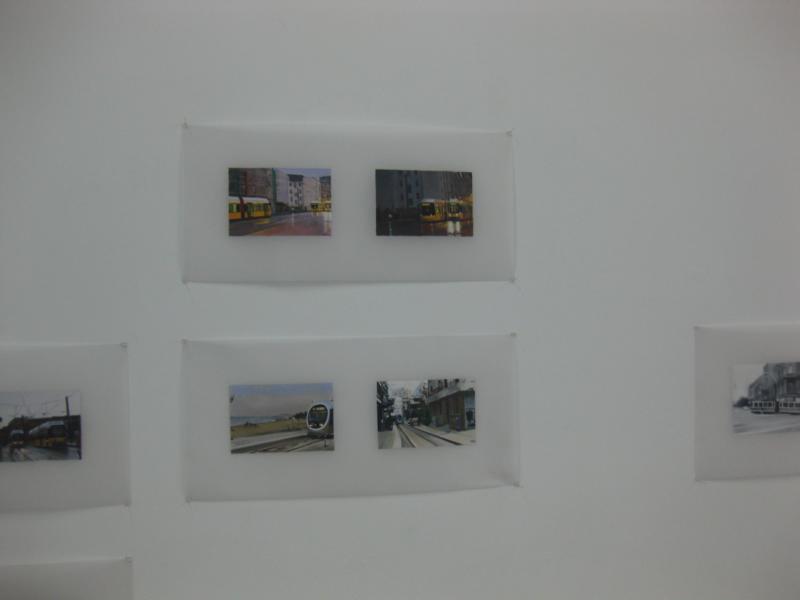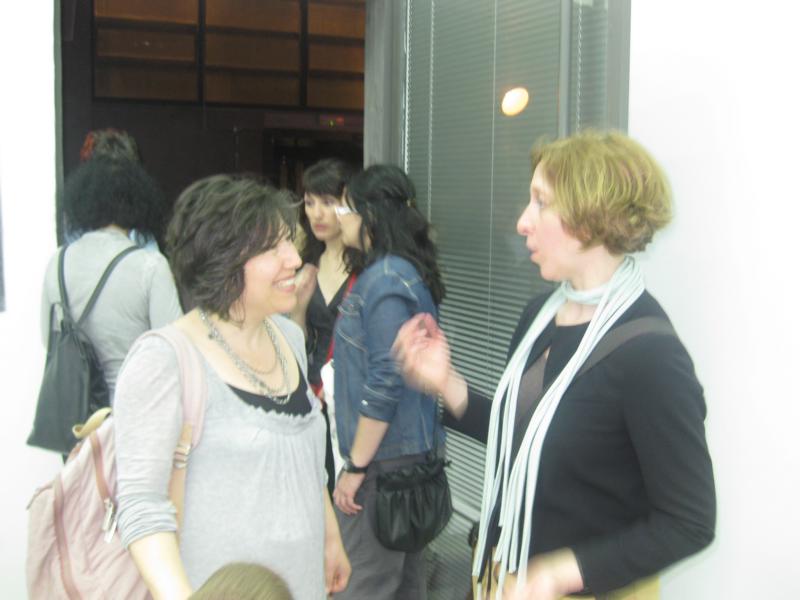"Collecting the city" - Installation at BETON in Athens
Maria and Natalia Petschatnikov| Collecting the City
When Nabokov wrote his guide to Berlin in 1925, he compared the street car with similar vehicles he had experienced in St. Petersburg and predicted this strange means of transportation shall soon be something of the past. For how to deal with a vehicle which requires taking the horses from one end to another so that the car can be pulled again on tracks in the opposite direction. This reverse seemed to have perplexed him as he became much more observant of the fast hands of the ticket collector in the tram. They were according to Nabokov not as elegant as those of a pianist but rather sausage like very thick. All the more he wondered how can they handle the coins so fast and this without dropping any one of them. There was another feature Nabokov noted when describing the streetcar travelling through the streets and collecting people at the various stops. Like a Russian fable once some got off and new ones joined those inside the street car, the story would continue after giving a brief account of what had taken place previously.
Naturally for Maria and Natalia Petschatnikov the continuity of the story was all the more of interest for once they moved to Berlin and started to make likewise everyday observations of daily life in the city, the streetcar had contrary to Nabokov's prediction not disappeared but over the years been redesigned and transformed into an elegant vehicle. Attracted to this dancer through the streets, the Twins started to make a photo documentation of their daily observations of the street car. Once back in the atelier in Berlin, they would use the photos as model for painting the same object. As twins all the more was this amazing kind of duplication without being a copy of the other. Both of them would paint from the photo the streetcar on a small postcard like format as this entails another form of close up observations. Once that had been intertwined with their concept of an installation, they used tulle to re-create the image of the object they had seen, photographed, painted and observed close at hand in their atelier.
An amazing coincidence took place when the train and street car designer Lutz Gelbert entered the atelier and saw the installation, for what they had captured was one of his designs.
Lutz Gelbert entering the atelier in Berlin
Of interest is that Lutz Gelbert noted immediately an improvement in the technical design of the vehicle. He described it as having becoming much softer. What followed between him and the two artists was something coming close to innovation made possible by the arts perceiving other things than what a technical engineer is inclined to do.
Lutz Gelbert
Lutz Gelbert himself was not only technically orientated but equally appreciative of the artistic side, and this all the more so of the works of the Twins coming from St. Petersburg because he had spend himself some time during his studies in St. Petersburg. While there, he had devoted his time to studying design and the arts. There was immediately a deep affinity between the three as they had many common grounds for such an appreciation. Thus he know both the aesthetical and the technical aspects, and that meant he could know what would combine in terms of costs of production. In other words, he was able to judge what is a flawed design since it would drive up production costs whereas any improvement in a technical vehicle would mean contributing to the services offered in the final end to its users. He was most amazed by seeing his own design being shown with a much softer touch than he had ever imagined could be possible.
Thanks to curator Haroula Hadjinicolaou who had met the twins while in Hamburg, they were were brought in contact with Beton Gallery in Athens and thus the exhibition of their installation was realized there from 4th of May until 25th of May 2012.
Installation-Exhibition at BETON Gallery in Athens, May 4th until 25th, 2013:
"Collecting the City"
Poster and texts made available for the exhibition by BETON Gallery:
|
PRESS RELEASE: "Collecting the City" Beton7 is proud to present the latest exhibition of Maria and Natalia Petschatnikov which creates a visual dialogue between Berlin and Athens. The artists are identical twins, born in St. Petersburg, Russia, now living and working in Berlin. They work collaboratively and consider their works to be conversations. The installation Collecting the City deals with the archaeology of the modern metropolis. At first, it looks like a “bagatelle’’ of everyday life having as a protagonist the street car which is artistically explored and viewed from new angles. A construction sight is created inside the gallery with both images brought from Germany and elements sight specific to Athens. The piece is blending boarders between inside and outside spaces, hand-made and found objects. Black and white large-scale wall images of two illusionistic modern trams made of layers of transparent fabric are combined with actual materials, such as sand, stone and metal. Tram cables create a complicated net on the gallery ceiling. Trams glide almost effortlessly through Berlin. Their geometric and at the same time organic form and elegant movement are dance like, whereas their cable lines form a delicate drawing on the sky. But trams are also mirrors; they mirror the city through their large windows and have identical front and back views. Series of diptychs, oil painting miniatures on transparent paper, accompany the installation. They originate in three prime images: modern trams based on snapshots taken in the city, historical trams inspired by old documentaries and the sky, intersected by tram cable lines. Black and white images are juxtaposed with colour paintings, realistic moments are combined with almost abstract ones. Pedestrian, flaneur view of the city will hopefully invite the viewers to make their own discoveries of hidden stories and take notice of their personal way through the city. The artists suggest historical reference to the streetcar of the 19th century and it's reemergence in a contemporary metropolis. This earliest form of public transportation was abolished during the middle of the 20th century, whereas nowadays, following the ecological concerns of urban planning, this “timeless’’ and graceful vehicle is coming back in a festive atmosphere. Curator: Charis Hadjinicolaou, art historian |
Haroula Hadjinicolaou talking with one visitor
Maria and Natalia Petschatnikov
|
The twins Maria & Natalia Petschatnikov (*1973, St. Petersburg) work as an artist duo in the border region between painting and installation. Their works give us a glimpse into how the world must look to two people whose lives are intimately connected. The Petschatnikovs choose to focus on seemingly insignificant phenomena that are part of our daily lives. With imagination and wit, they manage to tease out new and surprisingly profound perspectives on the everyday world; they find the extraordinary within the ordinary. Maria and Natalia Petschatnikov are not sociologists, their methods are not those of documentarians, their motives not those of field researchers. Rather, they look for their motifs as they stroll through the city and collect, and the photographs they take while doing so become the basis for the painterly or sculptural engagement with the objects. It seems that these calculatedly focused images and installation-like stages achieve associative spaces thanks to the disparity of their media. A narrative level thus comes into being, and spaces open up that want to be filled with one’s own stories, memories, and ideas. The Petschatnikovs also emphatically invite the viewer to make connections between their various projects, as between the various media that they utilize. Maria & Natalia Petschatnikov live and work in Berlin. |
www.beton7.com - info@beton7.com
The Twins Maria and Natalia Petschatnikov
|
|
|
|
|
|
|
|
|
Such an installation allows visitors to discover things in space, and therefore also rediscover what a street entails as space once a street car goes through it. In phenomenology, this would be analysed as a conceptualization of space in the way things are perceived in space.
However, this sensational experience differs from what constitutes the aesthetical receptivity of a sculpture. The latter seems for the viewer to take away space whereas such an installation gives orientation in space. This may be due to what levels of the magination are touched upon.
Rightly so their work is described as existing at the border between painting and installation. That imaginary, likewise flimsy effect of material moving and yet giving the impression of being like a painting when it is not, that is due to Maria and Natalia Petschatnikov using tulle. This has all the more a powerful effect as it is the material used by dancers for their skirts. Use thereof allows the two artists to underline their association of the streetcar with a dancer through the streets of the city.
To give further insights in their way of perceiving things, they installed at the backroom of the gallery just the street space marked by the network of wires needed to let the street car obtain electricity.
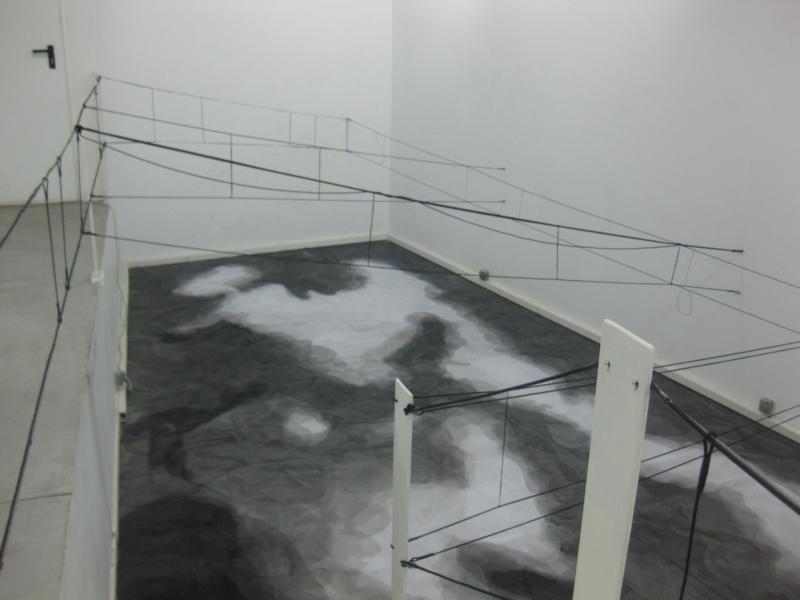
Installation 2
The floor was painted as if clouds pass over a ground while the lines themselves are a stark contrast to the efforescent floor effect. That gives another sensation of the spatial dimension entailed by having a street car dancing through the streets. Usually clouds are observed when looking up to the sky hovering over a city, but this time the reflection is like a mirror effect the floor. Suggested is a reverse angle for indeed to see the wires anyone going through the streets has to look up.
To illustrate further their technique and art of working - observations in streets / photographs thereof / replicas of the photos by painting the observations of the photos of distinct objects - when preparing for the use of tulle to make their installations into a 3D like art work, they showed in the exhibition these paintings.
Painted sketches of the streetcar
Such an exhibition evokes further going discussions about their unique contribution to what figures under unusual observations of daily life. Life occurances are of interest to the two artists. They mark in their art works objects when they begin to take on a literal meaning. Here they follow in the foot steps of Nabokov but they do so without risking likewise of making a prediction about the future of what they observe. Rather their observation curtails or limits traditional discourse about the function and role of the arts since they elevate through their installations the possibility of people themselves to enter and to reflect their own observations. It means in the end another kind of engagement by the artist in the communicative process not before or only during the exhibition but afterwards. Since it is a truthful aesthetical experience when the art works unfold their meaning as people start to go in-between their self made experiences and reflections thereof as helped along by conversations with the two artists themselves, that is with Maria and Natalia Petschatkinov.
Text and photos by Hatto Fischer
Athens 27.12.2013
« Dogs - an installation by Maria and Natalia Petschatnikov | Auf den Spuren Nabokovs / Tracing Nabokov »

